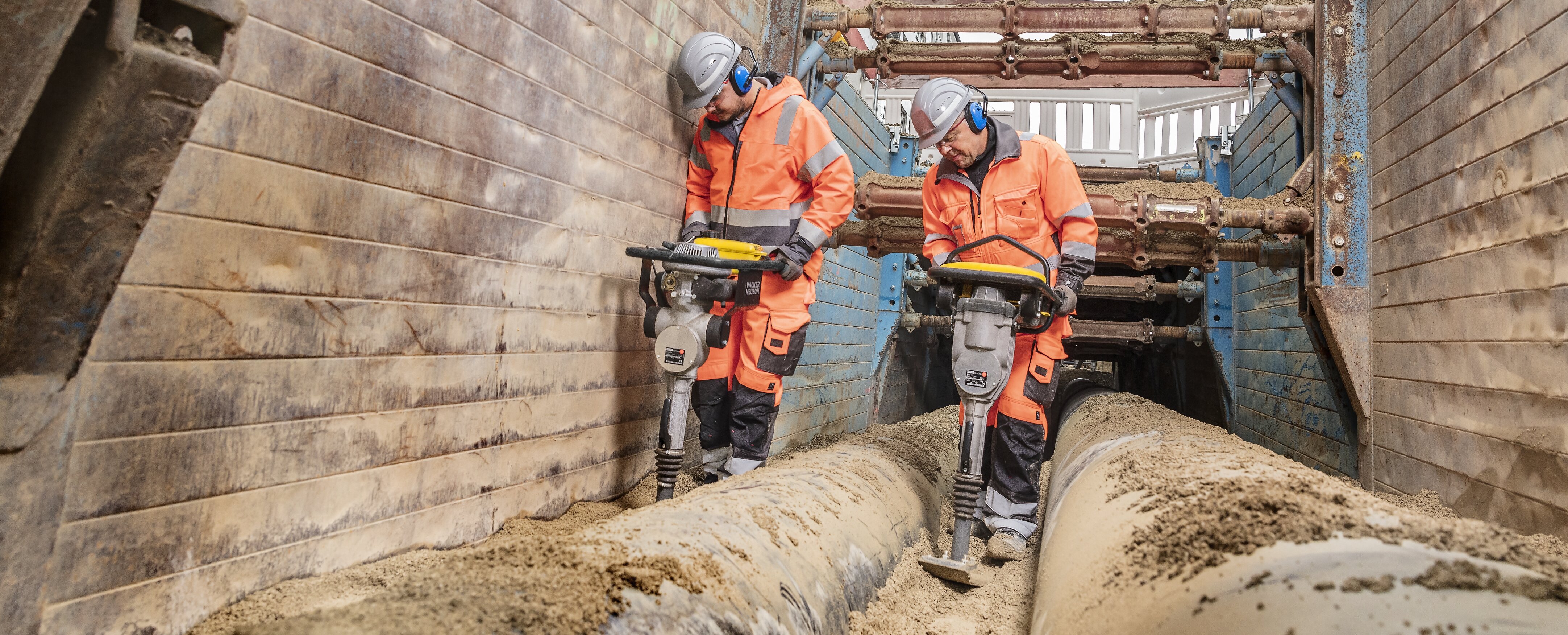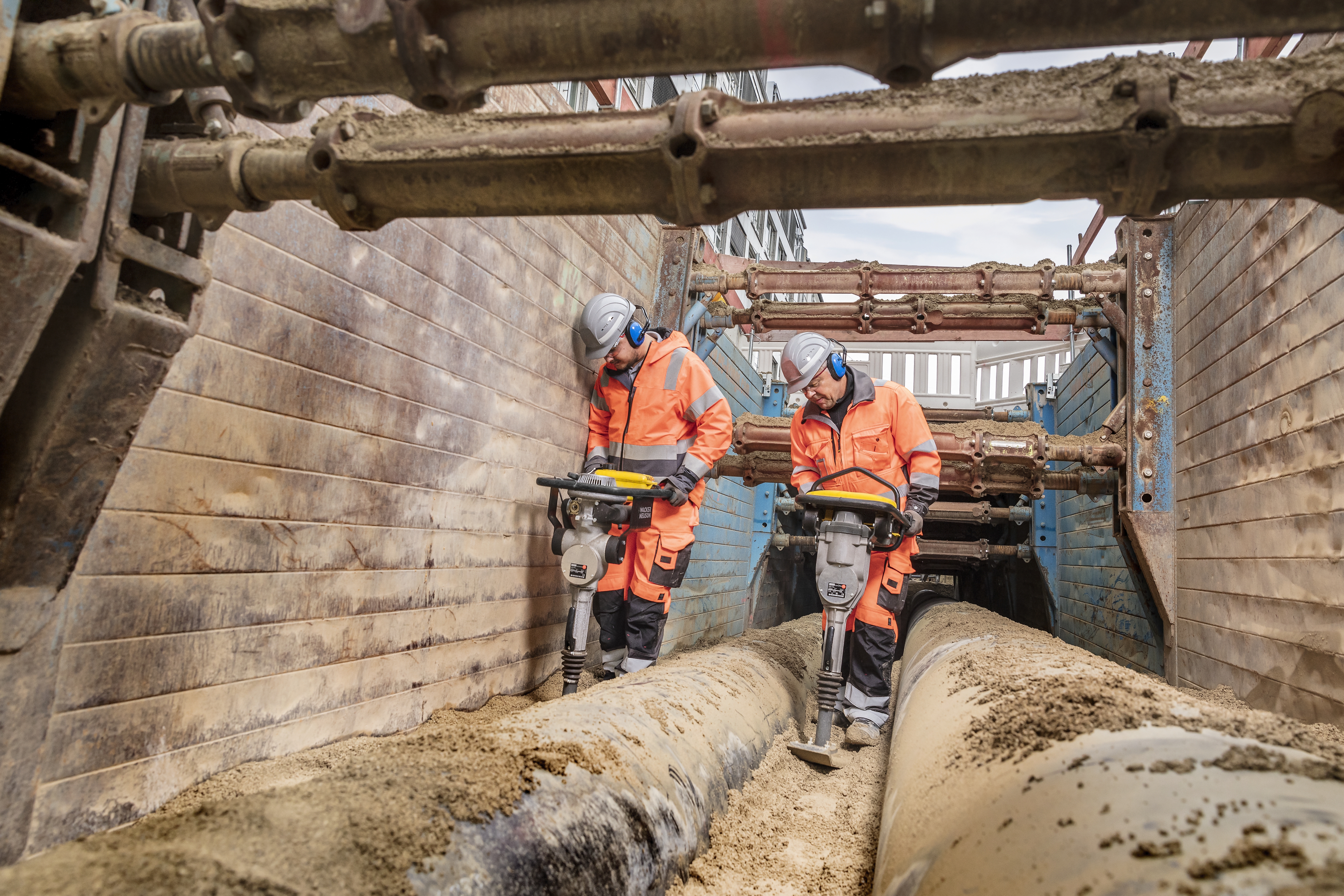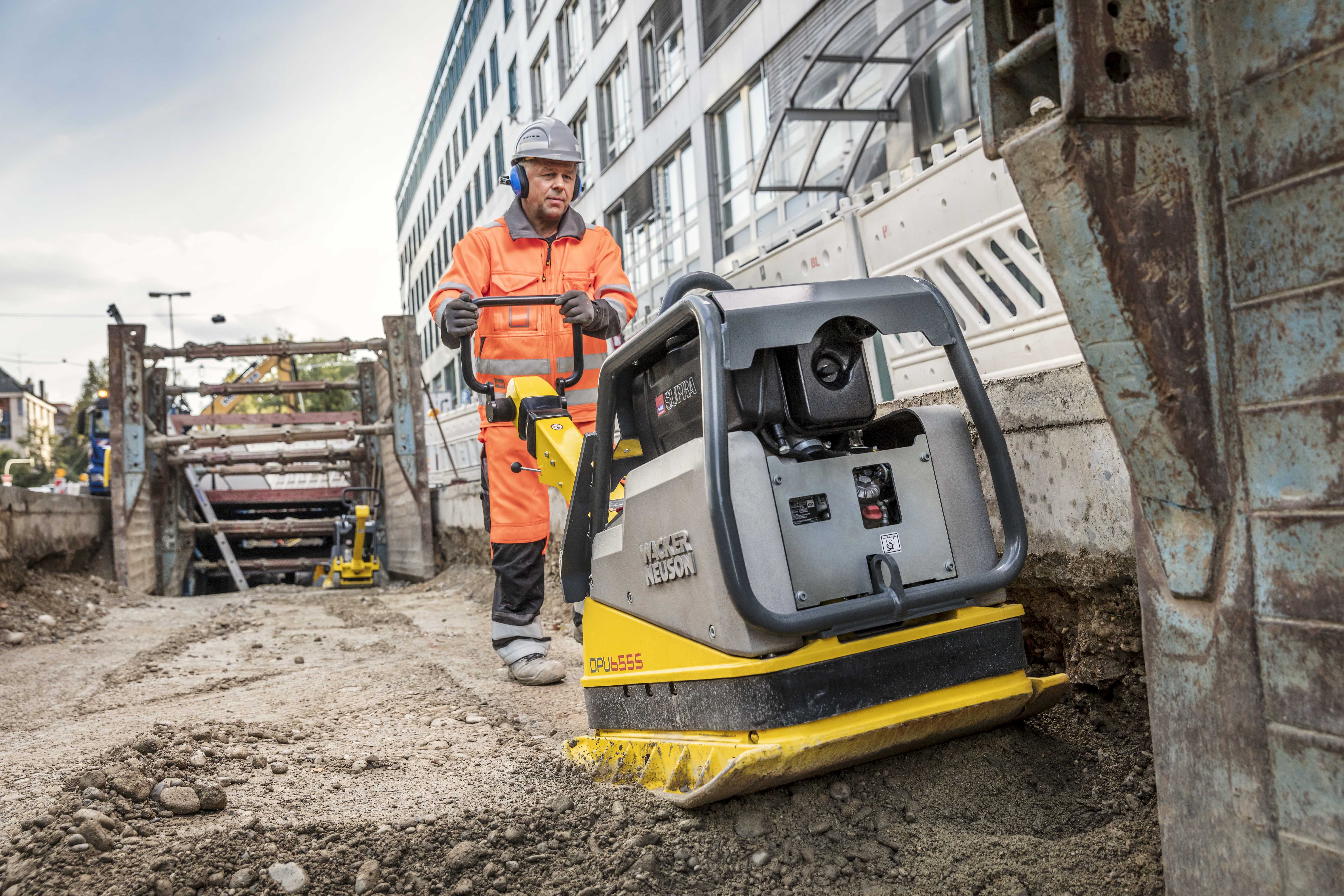From vibratory rammer to roller
The Wacker Neuson vibratory rammers had the opportunity to demonstrate their full strengths in the confined spaces on the construction site: as these are flexible and powerful machines, they were ideally suited for the work in trench shoring and were used for the compaction of the materials in the pipe branch points as well as at the sides of the pipes. Besides the classic 4 stroke rammers, various 2 stroke rammers were also put into use. These are offered only by Wacker Neuson with a specially developed and manufactured engine, impressive with low emissions. Also, the battery-powered rammers scored points on compaction work in trenches: their fully emission-free working principle protects the operators and persons in the construction site environment from exhaust emissions. Meanwhile, the compaction performance matches that of the respective gasoline vibratory rammers of the same size class.
Single-direction as well as reversible vibratory plates were used for the compaction of the different layers of soil when refilling the trenches. Almost all vibratory plates by Wacker Neuson achieve values of under 2.5 m/s² in hand-arm vibrations, which means pleasant and safe working for the operator. This low vibration value means the documentation requirement is not applicable, saving contractors time. When using the remote-controlled vibratory plates DPU80r, DPU110r and DPU130r as well as the remote-controlled trench roller RTx, no hand-arm vibrations of any kind result and the operator is protected from exhaust emissions, dust and noise pollution.
Ideal results for the last work step, asphalt compaction, were delivered by the ride-on roller RD18 and the walk-behind model RD7. The articulated combination roller RD18 with a drum width of 100 centimeters is particularly maneuverable and offers an optimum view in all directions. With this, it is ideally suited for application in confined inner-city areas. With the walk-behind dual-vibration roller RD7 in the 700-kilogram class with a drum width of 650 millimeters, the user benefits from, among others, easy operation via a particularly ergonomic center pole and tool-free access to all service points. Another bonus point: The roller RD7 exhibits, with less than 2.5 m/s², the lowest hand-arm vibrations on the market. “Wacker Neuson machines have become widespread at all our construction sites,” adds Sebastian Wolfrum, project manager at Kassecker. “It all just fits: the price-performance ratio, the service and the reliability of the machines.”
Emission-free alternatives
Especially for compaction work in trenches or sensitive environments such as in inner cities, electric-powered machines present an alternative that makes sense – and were thus predestined for the Munich construction site. In the meantime, Wacker Neuson offers three vibratory rammers that work emission-free as well as three vibratory plates for this. The basis is a highly modern lithium-ion battery that was designed specially for hard work applications in construction and delivers sufficient energy for all work that comes with an average workday with a machine. Besides the emission-free working principle, this means other advantages: The machines can be started easily and reliably at the touch of a button, resulting in an energy cost savings of 50 percent on the vibratory plates, and on the battery-powered rammers, even 65 percent. In addition to the motor being completely maintenance-free, all the typical maintenance requirements on conventional vibratory rammers, for example on the carburetor, do not occur with the battery-powered rammer. Two Wacker Neuson Systainers are available for the batteries: a transport box and a charging box with integrated quick battery charger. In the Systainers, the battery and charger are safely protected from soiling and damage. The transport box has been UN-certified especially for Wacker Neuson and fits the battery exactly. This allows the battery to be transported safely in accordance with ADR/RID guidelines.
The compaction products in use:




